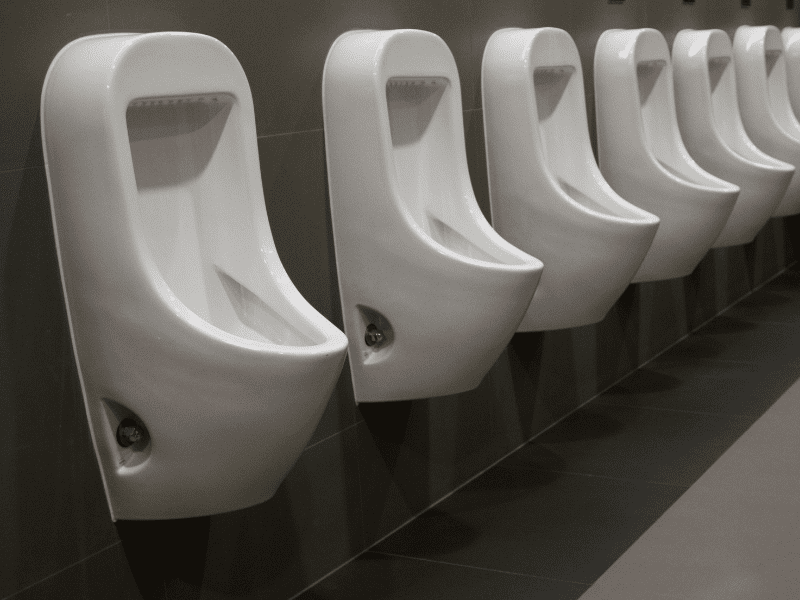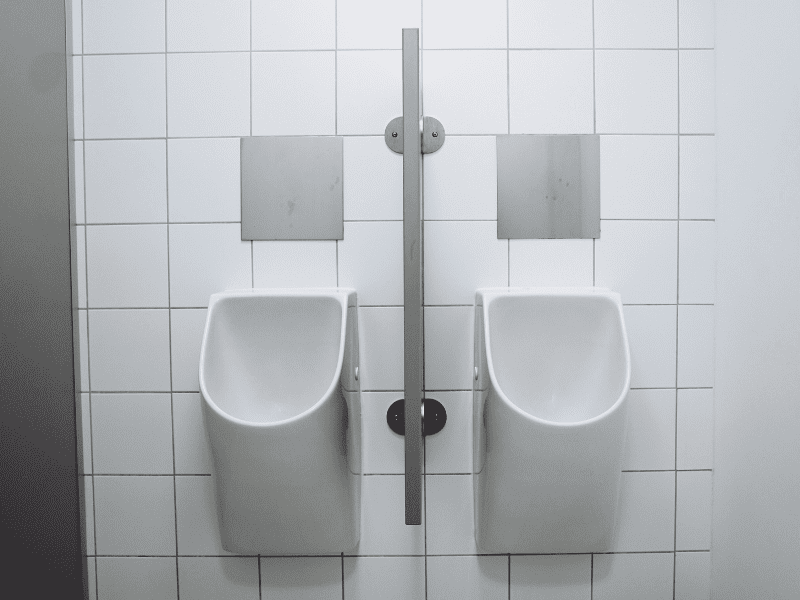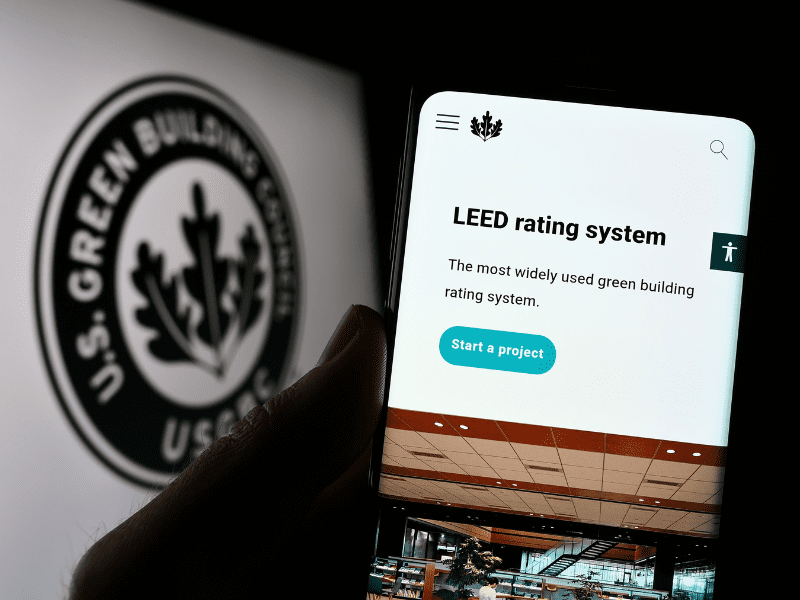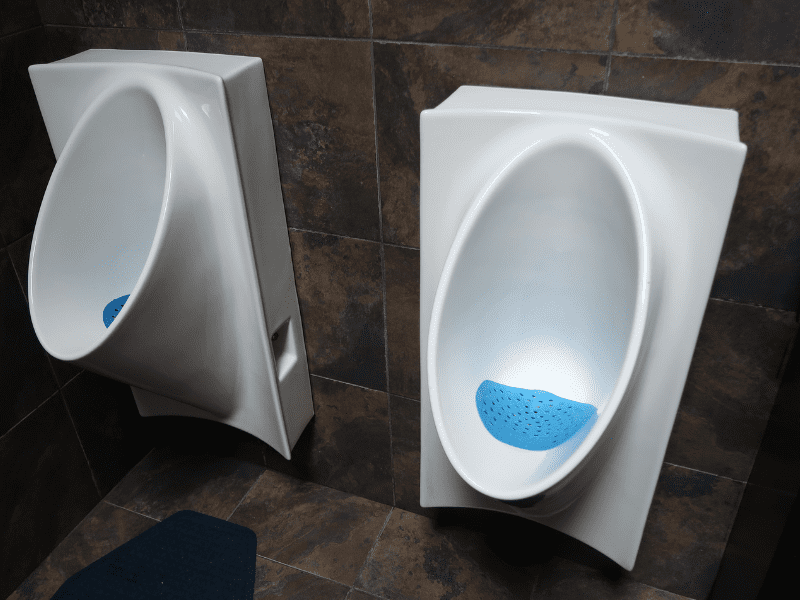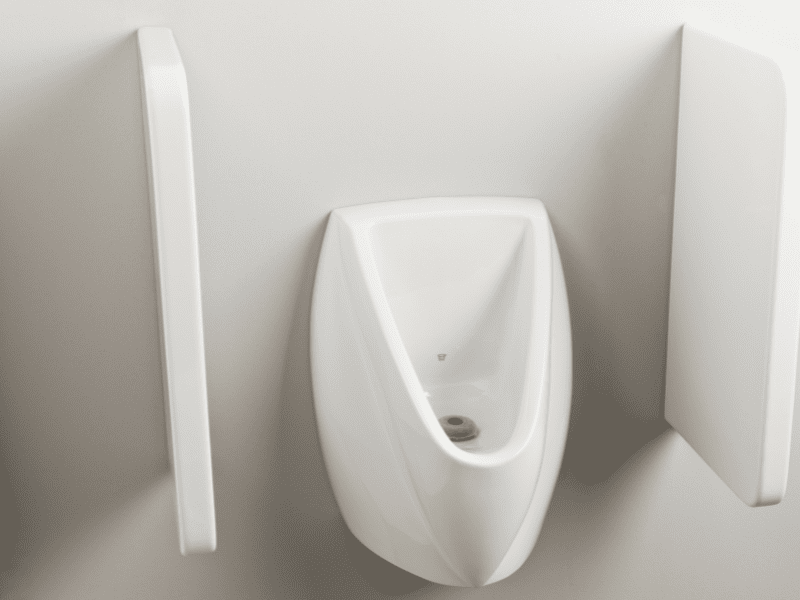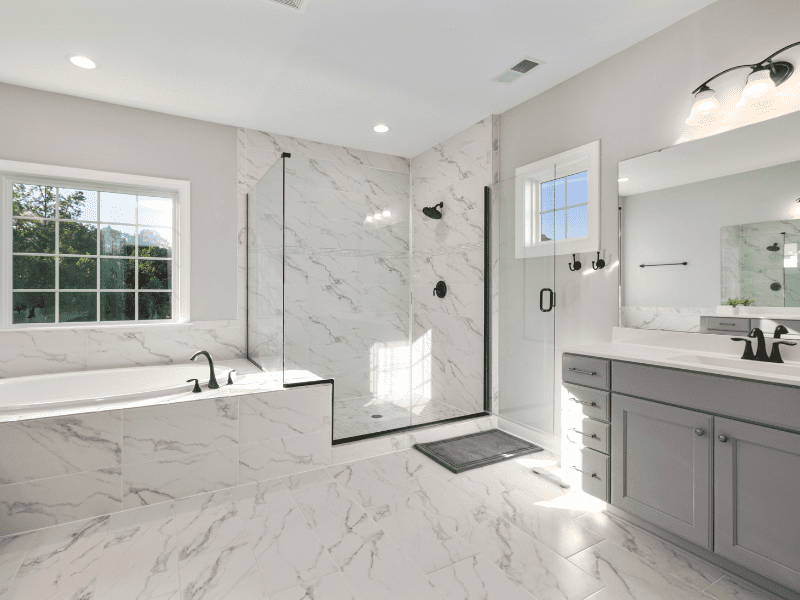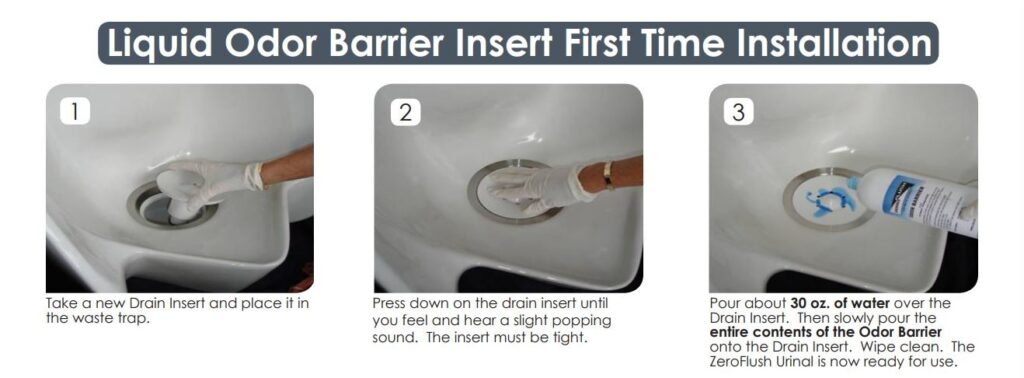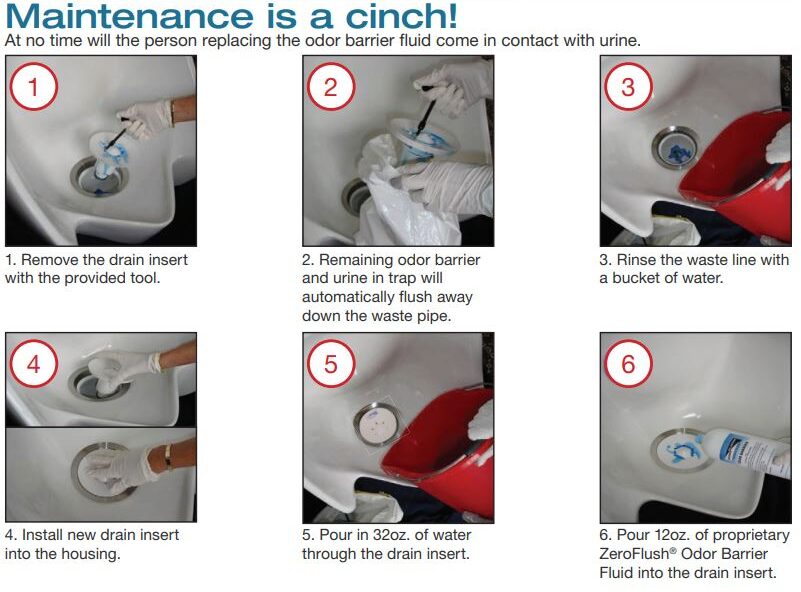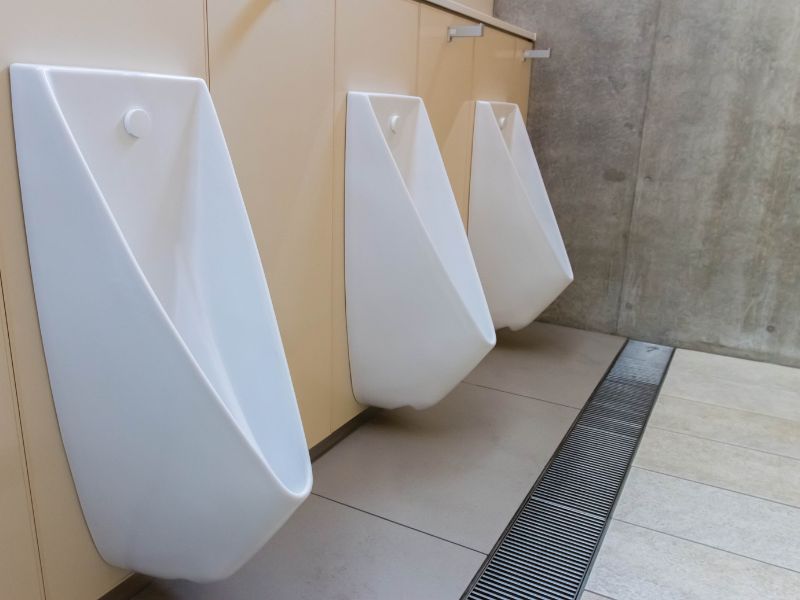
Clogged toilets are an annoyance that no business owner or facility manager wants to deal with. When you switch to waterless urinals, the cartridge and seal system helps limit clogs, but you may still experience slow drainage and backups. Follow these steps to unclog your urinal quickly.
Understanding How Waterless Urinals Work
The design of a traditional urinal hasn’t changed much over the years. Once the urinal has been used, a person presses the flushing mechanism, releasing water into the bowl, which leads to a drain. Waterless urinals, on the other hand, do not have a flushing mechanism. Instead, urine is directed down a slanted bowl toward a cartridge that locks into the drain opening—no water needed.
The cartridge is designed to keep foreign objects from flowing into the drain pipe and to keep foul odors inside the drain pipe. A sealant inside the cartridge assists with the process. It’s made of an oil-based liquid that is less dense than urine. When urine enters the cartridge, the liquid sealant displaces the urine, pushing the waste into the drain pipe. While the cartridge design does prevent clogs from common items like toilet paper or solid waste, improper maintenance could lead to a buildup of uric scale inside the drain pipe.
Common Signs of a Clog
If the uric scale has built up inside the drain pipe, or if debris has somehow made its way inside, you will most likely experience slow drainage or potentially pooling at the bottom of the basin. You may also notice foul odors coming from the waterless urinal. If you notice any of these signs, it’s best to act quickly to avoid restroom closures.
Should You Replace or Clean the Cartridge?
While it’s important to keep up a regular cleaning schedule for your waterless urinals, if you are noticing any of the signs above, including slow drainage, backups, and foul odors, the cartridge likely needs to be replaced. Manufacturers recommend replacing cartridges every three to six months, though many factors may affect the timeline for your waterless urinals. For instance, urinals in high-traffic restrooms will require more frequent changes, while those in an office building may be able to wait closer to the six-month mark.
Step-by-Step Guide to Unclogging a Waterless Urinal
If you suspect a clog in your waterless urinal, you’ll first want to remove the cartridge. Then you can determine if there is actual debris in the drain pipe or if the slow drainage is due to a buildup of uric scale. Follow these steps to diagnose and repair the problem.
Step 1: Gather the proper materials.
Before you get started, be sure to have the right tools and equipment handy. You’ll need:
- A cartridge key to unlock and remove the cartridge from the drain
- A bag to dispose of your existing cartridge
- A replacement cartridge
- A soft scrub brush
- Warm, soapy water
- Auger or snake
- Safety PPE, including gloves and a mask if you are sensitive to foul odors
Step 2: Remove and inspect the existing cartridge.
Insert the cartridge key and turn to the left to loosen the cartridge. Tilt the cartridge slightly to drain any excess liquid inside. Inspect the cartridge for a gray or discolored layer of uric acid near the opening on the bottom. If so, it’s best to dispose of the cartridge in the plastic bag provided. If the cartridge looks clean, set it aside while you clear the drain pipe.
Step 3: Remove the uric scale.
If there is a buildup of uric scale, it will need to be removed for the urinal to drain properly. Using a non-corrosive cleaner and soft scrub brush, remove the scale inside the drainpipe.
Step 4: Flush the drain line.
Pour about 1 liter of warm, soapy water into the open drain. If it flows freely, it’s likely the cartridge was the issue. If you are still experiencing slow drainage, there may be a clog in the line.
Step 5: Unclog the drain.
Insert an auger cable or snake into the drain pipe and crank slowly to find and release the clog. If this does not work, you can consider using a plunger with light pressure. Heavy pressure and thrusting from the plunger could damage the urinal.
Step 6: Replace the existing cartridge or install a new one.
To replace your existing cartridge, insert the key, line up the notches in the drain pipe and the cartridge, insert, and twist to the right until it tightens. To install a new cartridge, follow the manufacturer’s directions.
When to Call a Professional
If you are unable to unclog your waterless urinal using the steps above, or if you experience persistent clogs, it’s best to contact a licensed plumber. The issue could occur further down the drain line or in the venting.
What to Avoid During the Process
Harsh chemicals, drain cleaners, and bleach will break down the sealant inside the cartridge, causing possible backups in the future. If you need to remove uric acid and scale from the inside of the drainpipe, be sure to remove the cartridge first. You’ll also need to remove the cartridge before attempting to use an auger or a plunger to free the clog, and apply low pressure to avoid damage.
While you might be tempted to simply remove the cartridge and keep the drain line open, this will likely lead to more serious issues. With an open drain, clogs will be more likely, and foul odors will be more persistent. Using and regularly replacing a cartridge and seal will help the waterless urinal function properly.
Preventative Maintenance Tips
Compared to traditional urinals, waterless urinals require much less maintenance, but keeping up with that maintenance is necessary for avoiding clogs, slow drainage, and costly repairs. First, establish a cleaning routine and train your cleaning staff on best practices. Avoid harsh chemicals and rough scrub brushes to clean the inside of the bowl, as the chemicals break down the sealant, and the scrub brush could damage the non-porous porcelain. Instead, a regular spray of a manufacturer-recommended cleaner and a soft cloth to wipe is all that is needed to avoid stains or smells.
A functioning cartridge is also essential. While most cartridges last anywhere from three to six months, the timeline is ultimately based on how often the urinal is used. Conduct weekly or monthly inspections to check for uric buildup, and keep records to notice patterns and anticipate when the cartridge will need to be replaced. This should help you avoid clogs and slow drainage in the future.
Aqua Pro Solutions makes it easy to maintain your waterless urinal with the ZeroFlush system. Shop top-quality waterless urinals, cartridges, sealants, and odor barriers. You’ll also have access to Aqua Pro’s top-notch customer service for all your waterless urinal needs.
Unclogging Waterless Urinals
It’s never a good feeling to notice slow drainage or backups in your waterless urinal, but fortunately, the solution is usually quite easy. While it’s uncommon for clogs from debris to form in a waterless urinal drain pipe, it can happen, though the most common reason for slow drainage is an old cartridge. If you noticed slow drainage or pooling around the cartridge, remove and inspect it. If it’s covered in a layer of uric scale, that’s a likely indicator that the cartridge needs to be replaced. As always, use manufacturer recommendations as a guide to determine when to change your cartridges, and follow general maintenance protocols to maintain your urinal’s functionality.

